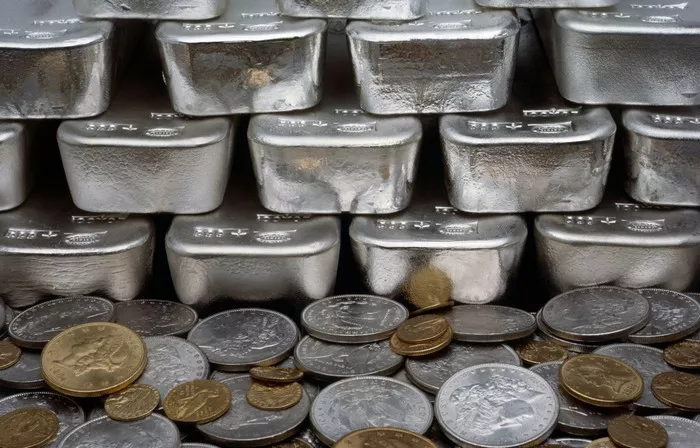Silver, often considered a precious metal and an industrial commodity, is subject to various fundamental factors that can significantly influence its price in the global market. Traders and investors keen on understanding the dynamics of silver prices should grasp the fundamental factors that impact its supply, demand, and overall market sentiment. From industrial usage to macroeconomic indicators, several key factors play a crucial role in shaping the trajectory of silver prices.
I. Industrial Demand and Supply
Industrial demand is a significant driver of silver prices. Silver’s unique properties, including its high electrical conductivity, make it a vital component in various industrial applications such as electronics, solar panels, and medical instruments. Changes in industrial production and technological advancements can directly affect the demand for silver, subsequently impacting its price. Additionally, the supply of silver is influenced by factors such as mining production, recycling rates, and geopolitical factors that can disrupt mining operations or trade.
II. Investor Sentiment and Market Speculation
Investor sentiment and market speculation contribute to the volatility of silver prices. The perception of silver as a store of value and an alternative investment asset often leads to increased demand during times of economic uncertainty or inflationary pressures. Additionally, market speculation, driven by traders’ expectations of future price movements, can influence short-term fluctuations in silver prices, especially in the futures and options markets.
III. Global Economic Conditions
Global economic conditions, including GDP growth, inflation rates, and monetary policy decisions, can have a significant impact on silver prices. During periods of economic growth and increased industrial production, the demand for silver tends to rise, driving prices higher. Conversely, economic downturns and recessionary trends can lead to reduced industrial demand, subsequently affecting the price of silver. Moreover, central bank policies and interest rate changes can influence the opportunity cost of holding silver, impacting investor preferences and overall market sentiment.
IV. Geopolitical Factors and Currency Movements
Geopolitical tensions and currency movements can also impact silver prices. Political instability, trade disputes, and international conflicts can create uncertainties in the global market, leading investors to seek safe-haven assets like silver. Moreover, fluctuations in major currency exchange rates can influence the purchasing power of silver in different regions, ultimately affecting global demand and prices.
V. Silver Market Trends and Supply Chain Disruptions
Analyzing silver market trends and identifying potential supply chain disruptions is essential in understanding silver price movements. Factors such as changes in silver inventories, shifts in demand from different industries, and disruptions in the mining and refining processes can impact the overall supply and demand dynamics of silver. Monitoring these trends and anticipating potential disruptions can help traders and investors make informed decisions regarding their silver investments.
FAQs: Fundamental Factors Affecting Silver Prices
Q1: How does the silver market react to changes in the global stock market?
A: The silver market often exhibits a degree of correlation with the broader stock market. During periods of heightened market volatility or economic uncertainty, silver may be perceived as a safe-haven asset, leading to increased demand and higher prices.
Q2: What role do central banks play in influencing silver prices?
A: Central banks’ monetary policies, including interest rate adjustments and quantitative easing programs, can impact the value of fiat currencies and subsequently influence the demand for silver as an alternative store of value, leading to changes in silver prices.
Q3: How do changes in mining production affect silver prices?
A: Changes in mining production can directly impact the supply of silver in the market. A decrease in mining output due to factors such as labor strikes, regulatory changes, or natural disasters can lead to a decrease in supply, potentially driving prices higher.
Q4: What impact do technological advancements have on silver prices?
A: Technological advancements that increase the demand for silver in various industries, such as electronics and renewable energy, can positively influence silver prices. Conversely, a slowdown in technological innovation or the development of alternative materials can lead to reduced demand and lower prices.
Q5: How do inflation and deflation affect the value of silver?
A: Silver is often perceived as a hedge against inflation, as its value may increase during periods of rising prices. On the other hand, during deflationary periods, the demand for silver may decrease as investors seek assets with more stable returns, potentially leading to lower prices.
Understanding the fundamental factors that influence silver prices is crucial for traders and investors aiming to make informed decisions in the dynamic commodities market. By closely monitoring industrial demand, investor sentiment, global economic conditions, geopolitical factors, and supply chain dynamics, market participants can gain valuable insights into potential price movements and effectively manage their silver investments. Integrating a comprehensive understanding of both fundamental and technical analysis can empower individuals to navigate the complexities of the silver market with greater confidence and success.

